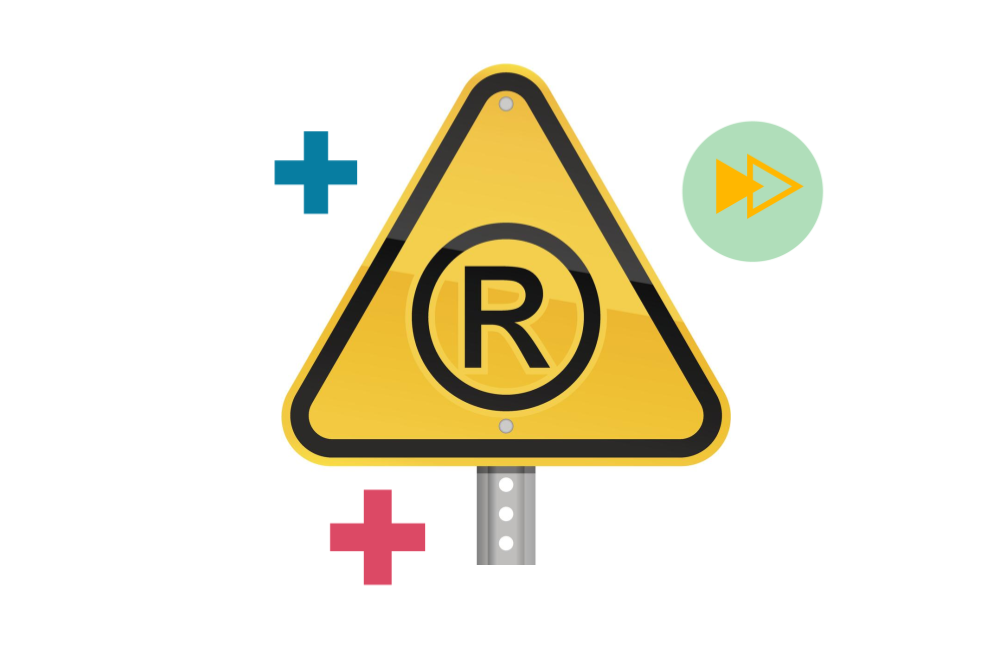
Author Matt Sammon
When brand owners or businesses consider their IP and the laws that protect it they typically just think of the four pillars of intellectual property: trade marks, copyright, patents and designs. Whilst these are the core areas of protection for your intellectual property, there are other IP laws that come into play, sitting alongside these key areas, and knowledge of these other areas can strengthen your IP strategy and your position as an IP owner.
In this article we are going to look at the following areas of Intellectual Property law and examine the role they play for businesses like yours:
- Comparative advertising
- Parallel imports and exhaustion of rights
- Database rights
- Fair Dealing in Copyright works
- Comparative Advertising
What is it? Comparative Advertising is essentially when one company uses another company’s trade mark, most likely a direct competitor, as a barometer against which to measure their own goods or services in terms of one or more features, for example quality, price or availability.
How is comparative advertising used?
This issue therefore feeds into broader trade mark infringement matters. This use may either be explicit, for example when supermarkets advertise the cost of their “typical” basket as being cheaper than one of their named competitors. Or alternatively, the use may be by implication, for example when the competitor is not expressly named, but it is clear from the terminology or references used who is being referred to.
Comparative advertising is permitted in the UK, and you cannot complain about the use just because you do not want anyone else to compare their products with your own. Likewise, your competitors cannot complain if you want to make such comparisons. It is, afterall, a basic advertising need to be able to claim that your product is better/cheaper/more efficient than a competitor.
However, there are numerous standards that an advert must comply with in order to be considered acceptable comparative advertising, and failure to stick within these standards can land companies in deep water.
Lidl vs Tesco Typical Basket Price Comparison Campaign
For example, in a recent dispute between Lidl and Tesco, Lidl compared their “typical basket” of own label products with a “typical basket” of branded products on offer by Tesco. Particularly amusing was that Lidl had included within their basket an own label fizzy wine, and “compared” that with a bottle of Moet Champagne in the Tesco basket. Unsurprisingly, this was not viewed by the Advertising Standards Authority (ASA) as a fair comparison, who understood why Tesco had been concerned by the comparison. Although Lidl had included some small print in the advertisement suggesting that Tesco may have some alternative unbranded products available, this was deemed insufficient.
In order to avoid falling foul of comparative advertising provisions, the advert in question must adhere to some basic principles:-
- The advert SHOULD make a “like for like” comparison: the goods or services being compared must meet the same needs or must be intended for the same purpose
- The advert SHOULD objectively compare at least one material, relevant, viable and representative feature – for example, the advert should contain up to date price information and should state the date of the price comparison
- The advert SHOULD be based on, and supported by, verifiable data – the information contained within the advert must be sufficient for the consumer to be able to make a proper comparison, and verify that data should they choose to do so
- The advert SHOULD NOT mislead the consumer
- The advert SHOULD NOT discredit or denigrate the trade marks, trade names, other distinguishing marks, goods, services or activities or other circumstances of any competitor
- The advert SHOULD NOT take advantage of the reputation of a trade mark or create confusion with a competitor
If you intend to use a competitor’s trade mark in your own advertising, we recommend that you seek advice from your trade mark attorney who will be able to advise the best way to do this.
- Exhaustion of Rights and Parallel Imports
What is it? Exhaustion of rights refers to a specific limitation on your IP rights. Essentially, you are able to control the first sale of your trade marked goods within a particular economic area, but after those goods have been put on the market, you lose the right to control the resale or further commercial exploitation of those goods within that same economic area. An economic area may be an individual country, or it may be a collection of countries, for example the European Economic Area (EEA).
A parallel import is a non-counterfeit, genuine trade marked product which has been put on the market by the trade mark owner, or with his consent, and has then been imported to a different country without the brand owner’s consent. Whether or not a parallel import is permitted depends upon whether not the rights of the trade mark owner have been exhausted.
The issue of exhaustion of rights and parallel imports has always been a particularly contentious matter. IP owners with an interest in protecting their trade marks find themselves locked in battle against those who believe that parallel trade is good for consumers because it enables competition.. They are also of the view that government controls and exchange rates are beneficial to parallel trade, which leads to lower profits which in turn does not encourage investment in crucial research and development, particularly in the incredibly costly pharmaceuticals sector.
How does this issue affect brand owners in the UK and Europe?
Pre-Brexit
Before Brexit, the UK was a member of the EEA, meaning that the UK and the rest of the EEA member countries made up one economic area. Through its membership of the EEA, the UK enjoyed a reciprocal arrangement with all EEA member countries in respect of exhaustion of rights and therefore parallel imports.
If a trade mark owner placed genuine goods on the marketplace in the UK, he had exhausted his rights in the entire EEA, and could not prevent the parallel import of those goods into any other EEA country. Likewise, if genuine goods were put on the marketplace in France for example, the trade mark owner had exhausted his rights throughout the entire EEA, and could not prevent the parallel import of those goods into the UK.
Post-Brexit
In The Intellectual Property (Exhaustion of Rights)(EU exit) Regulations 2019, the government has indicated that the present EEA exhaustion system will be retained to the extent possible.
This essentially maintains the status quo in the UK, but has no impact on the position in the EEA, unless the UK can reach a separate deal with the EU on the issue.
Therefore, post-Brexit, if a trade mark owner places genuine goods on the marketplace in France, the UK will honour the principal of EEA-wide exhaustion, and the rights owner will not therefore be able to take action against the import of those genuine goods into the UK.
In contrast, the EEA countries will not be required to honour EEA-wide exhaustion for goods coming from the UK, and as such, where genuine goods are put on the market in the UK, the rights owner will not be deemed to have exhausted his rights in the EEA, and may take action against the parallel import of those genuine goods into France, or any other EEA country.
As the issue of EEA exhaustion of rights is changing post-Brexit, it is important for brand owners and parallel importers to consider their position in the UK and EEA to ensure that they do not fall into the trap of continuing to do something which could now be prohibited.
There are some specific exceptions to the principal of exhaustion of rights, in particular where the condition of the goods has been changed or impaired. If you believe that you have been impacted by this issue, get in touch with your trade mark attorney who will be able to advise you further.
- Database Rights
What are they? Under the Copyright and Rights in Databases Regulations 1997, the term “database” is defined as “a collection of independent works, data or other materials which are arranged in a systematic or methodical way and are individually accessible by electronic or other means.” This is a broad definition, and applies to all manner of traditional mailing lists, directories and encyclopaedias and also databases in electronic versions.
How can database rights be used?
Database rights are automatically generated rights, and there is no formal application or protection route. Database rights go hand in hand with copyright protection.
Database Rights enable the owner to prevent the unauthorised extraction (the transfer of the contents to another medium by any means or form) or re-utilisation (making the contents of a database available to the public by any means) of all or a substantial part of the contents of the protected database.
As the owner of a database, you should consider whether you are better placed relying on copyright protection and its subsistence and infringement requirements or whether database rights may provide the protection that you are looking for, as there are some key differences in the protection provided.
For example whereas copyright protection requires originality, database rights require “substantial investment” in terms of quantity, quality, or both, which can be financial, human or technological. Whereas copyright protection lasts for the life of the author plus 70 years, database rights last for 15 years from the end of the year in which the making of the database was completed (with some exceptions around the issue of publication and substantial alteration of the database).
Crucially for many consumers, a copyright work that has been commissioned will belong to the commissioned party unless there is an agreement to the contrary. In contrast, where a database is commissions, the commissioner will usually be deemed to be the owner.
- Fair Dealing in Copyright works
What is it? Copyright is an automatically arising right in the UK meaning that it has no formal application or protection route. Copyright subsists in the physical manifestation of an original, independently created work, although that work does not need to be visually appealing.
Copyright protection entitles the owner to prevent the unauthorised copying of the whole, or a substantial part, of the copyright work.
How is fair dealing in copyright works used?
The concept of fair usage in UK copyright law is a framework designed to allow the lawful use or reproduction of work without having to seek permission from the copyright owner(s) or creator(s) or infringing their interest. Fair use law applies to musical, dramatic, artistic, literary and typographical works too. However, it does not cover the copyright of printed music.
Although a formal definition of fair dealing does not exist in legislation, the UK Intellectual Property Office (UKIPO) identifies the following factors which should be taken into consideration:-
- Has the use of the work impacted negatively on the market for the original work? A clear example here would be if the owner of the copyright work has lost potential revenue as a result of the use of their work, which would clearly fall outside fair use
- Was it reasonable and necessary to use the amount of work that was taken? If more of the copyright work has been used than was necessary, it is unlikely to be viewed as fair use, for example reproducing an entire poem for the purposes of referring to only one line from that poem
The Copyright, Designs and Patents Act 1988 lists some express examples where fair dealing is likely to apply, for example personal use, private study, text and data analysis, critique or review, quotation, reporting of current news events, and parody, caricature and pastiche. Most of these examples carry provisos, for example, the use must not be for commercial use, or there must be a sufficient acknowledgement where appropriate, or the extent of the use is no more than is required for the specific purpose.
Your trade mark attorney will be able to discuss your proposed use with you and will be able to advise what permissions you may require. Likewise, as the rights holder, your trade mark attorney will be able to advise on provisions that you should put in place to preserve your rights and ensure that your copyright work is not inappropriately used under the guise of fair dealing.
We create real IP value
From the everyday to the IP emergency, our accomplished Chartered Trade Mark Attorneys and IP Solicitors are driven to get the very best outcome for every brief for every client, every time! Sonder & Clay are a full service IP law firm with proven expertise and results in IP protection, strategy, disputes, and exploitation. Learn more about our IP services or get in touch with us for a complimentary IP audit today.



